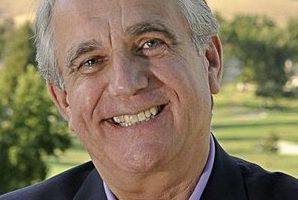Column: CEO Learnings
The role of the laity has become a central issue in the US Catholic Church today for two reasons. First, recent sex and financial scandals have mobilized the laity to become actively involved at all levels of the US Catholic Church. Interactions range from positive to negative. One national group, The Voice of the Faithful, which has not been warmly embraced by the hierarchy, is but one national lay group mobilized in the past few years.
The role of the laity has become a central issue in the US Catholic Church today for two reasons. First, recent sex and financial scandals have mobilized the laity to become actively involved at all levels of the US Catholic Church. Interactions range from positive to negative. One national group, The Voice of the Faithful, which has not been warmly embraced by the hierarchy, is but one national lay group mobilized in the past few years. Many more, like me who have been warmly embraced, are not part of an organized effort but have chosen to become individually and actively involved where the action is – the parish and diocesan level. Second, with the decline in religious vocations, the laity MUST be involved to insure the Church’s Mission. It is estimated that 33% of all parishes in California will be administered by deacons in ten years.
There are three requirements for the laity to be involved in a fruitful way. The laity must:
1. Be well formed.
2. Use the gifts God has given them (“The Called and Gifted”). And,
3. Understand their purpose and the role they fill within the Church.
Russell Shaw in The Catholic Laity in the Mission of the Church (Requiem Press, 2005) outlines the purpose and role the laity has played since Apostolic Times and finishes with the challenges we face today.
Russell Shaw is author or co-author of sixteen previous books including To Entertain: Clericalism and the Catholic Laity, and Personal Vocation: God Calls Everyone By Name and is a contributing editor of Crisis and Columbia magazines. He has served as the director of information for the National Conference of Catholic Bishops and presently teaches at the Pontifical University of the Holy Cross, Rome.
The Catholic Laity details the expanding clericalization of the church that began the third century whereby the clergy became the religious elite and the laity became looked upon as being essentially passive in religious affairs. And with it, public worship changed. The liturgy, formerly understood to be an action in which the people actively participated, became something priests did while the people simply watched.
With the Reformation and Luther’s total commitment to the gospel, “an obligation for all,” the serious pursuit of Christian excellence was no longer limited to the clerical and religious elite. Catholic St. Ignatius Loyola responded with “The Spiritual Exercises” and the need for each individual to discern God’s will for himself or herself, and act accordingly. Despite this and the attempts of others, clericalization within the Catholic Church persisted.
The Second Vatican Council marked the great divide in the history of the Church in modern times. Vatican II, concerned with the growing gap between the Church and the world, focused on the participation of the laity in the Church’s mission. “Who are better situated to carry the gospel to the world than committed lay women and men, themselves full and active participants in the secular society in which they live and work?”
Shaw builds on the scope and originality of the Second Vatican Council’s teaching about lay people with Church documents (The Dogmatic Constitution on the Church, “Lumen Gentium;” and the Decree on the Apostolate of Lay People, “Apostolicam Actuositatem;” and others) and the writings of other experts. The Catholic Laity is filled with excellent references.
Shaw further references and elaborates in detail on John Paul’s exhortation “Christifideles Liaci” which speaks to the eight areas of crucial importance for the lay apostolate in today’s world.
1. Promoting the dignity of the person;
2. fostering respect for right to life;
3. defending freedom of conscience and religious freedom;
4. protecting and encouraging marriage and family life;
5. engaging in works of charity;
6. participating in public life;
7. placing the individual at the center of socioeconomic life; and
8. the evangelization of culture.
Despite all the strides and exhortations, clericalization persists. The laity continues to face enormous challenges in fulfilling its collaborative role in the mission of the Church. Clericalization continues to defeat involvement and, in doing so, defeats the Church’s mission. And with the resistance to active, collaborative involvement, the Catholic Church has become a farm system for other Christian denominations.
Shaw begins Catholic Laity with the question, “Are we living in the age of the laity?” The simple answer in the end is “Not yet!”
Thomas M. Loarie
Danville, CA
December 15, 2007
tloarie@catholicbusinessjournal.biz
View Articles Thomas M. Loarie is a popular host of The Mentors Radio Show, the founder and CEO of BryoLogyx Inc. (BryoLogyx.com), and a seasoned corporate... MORE »


